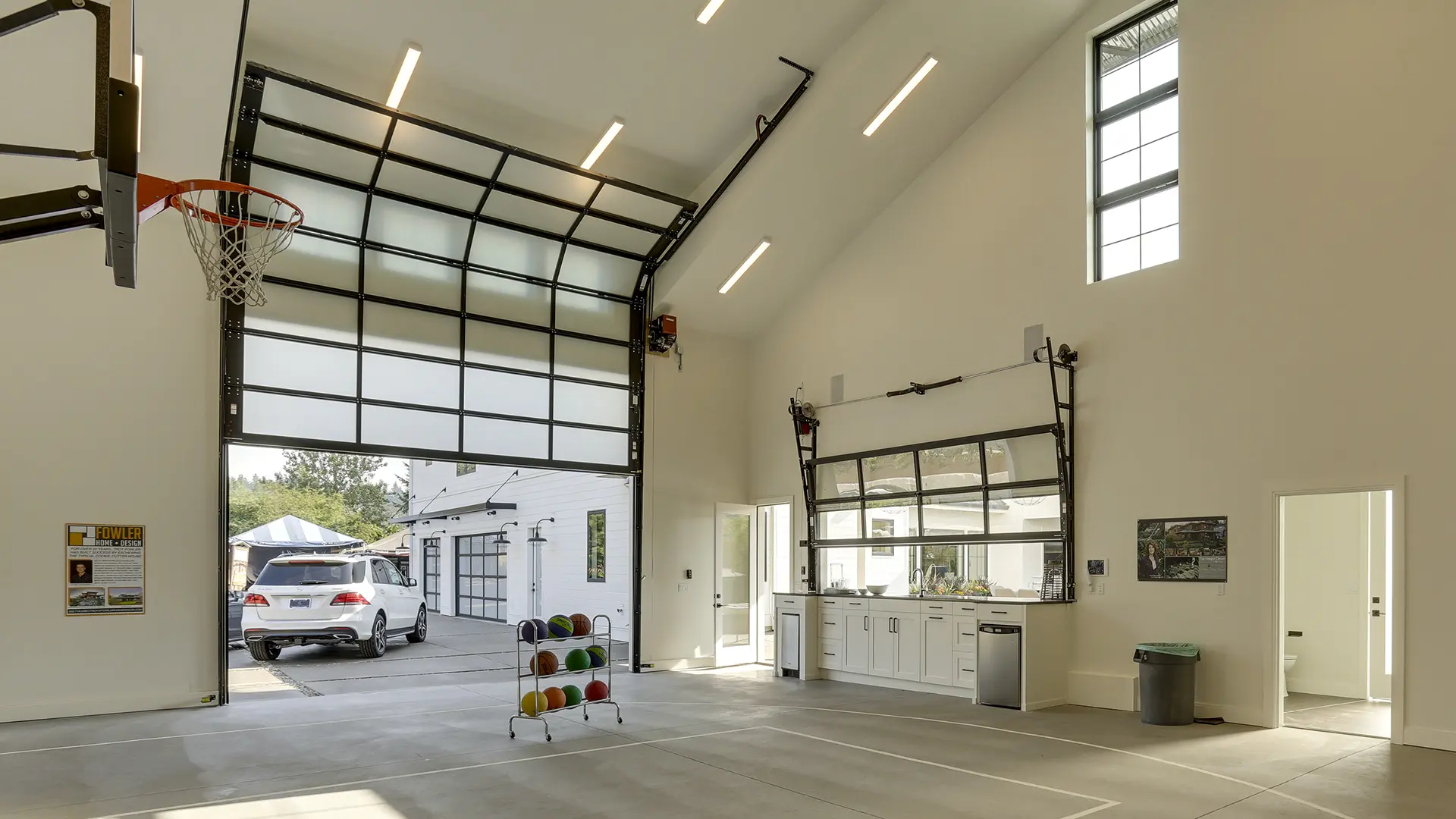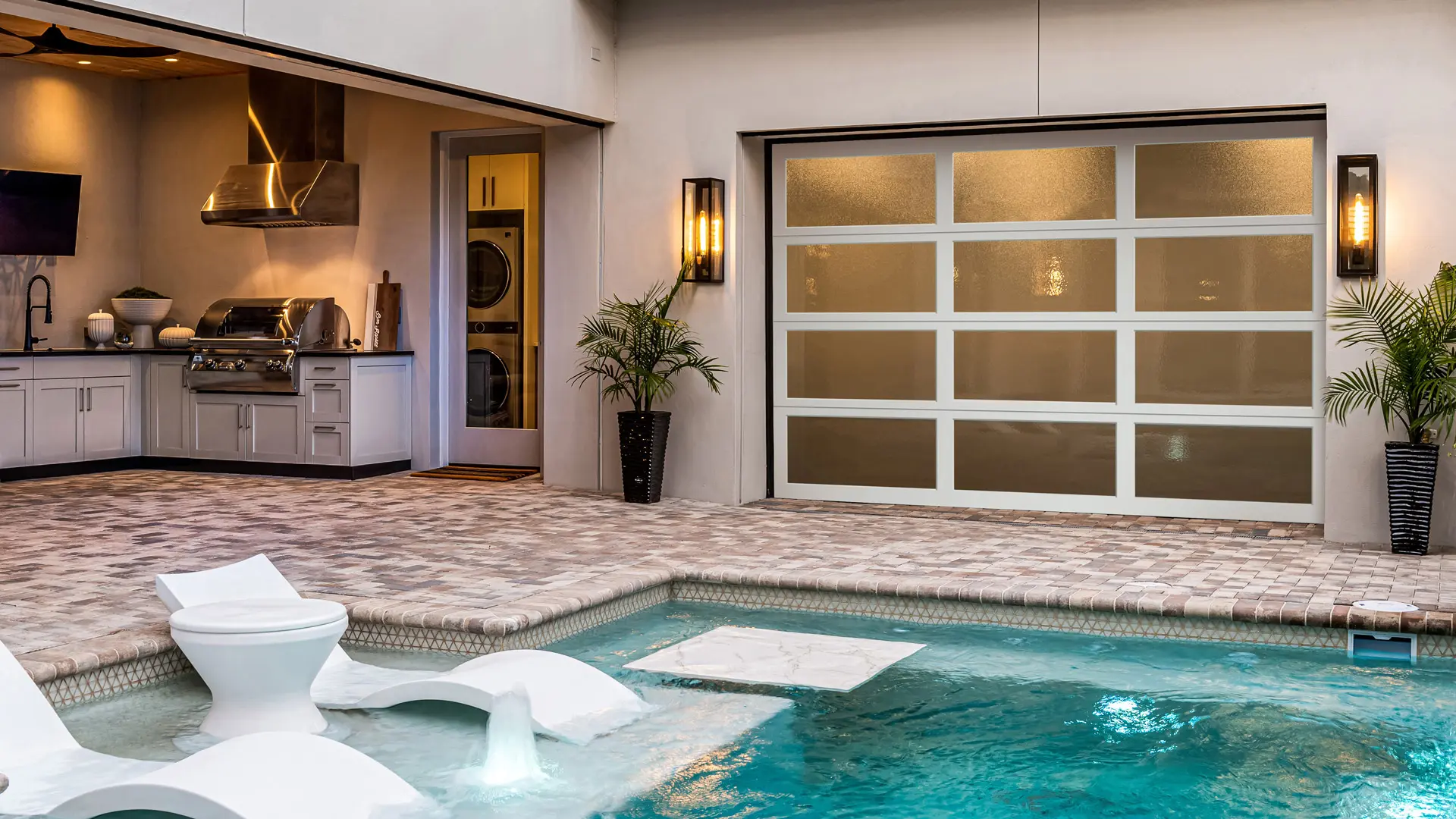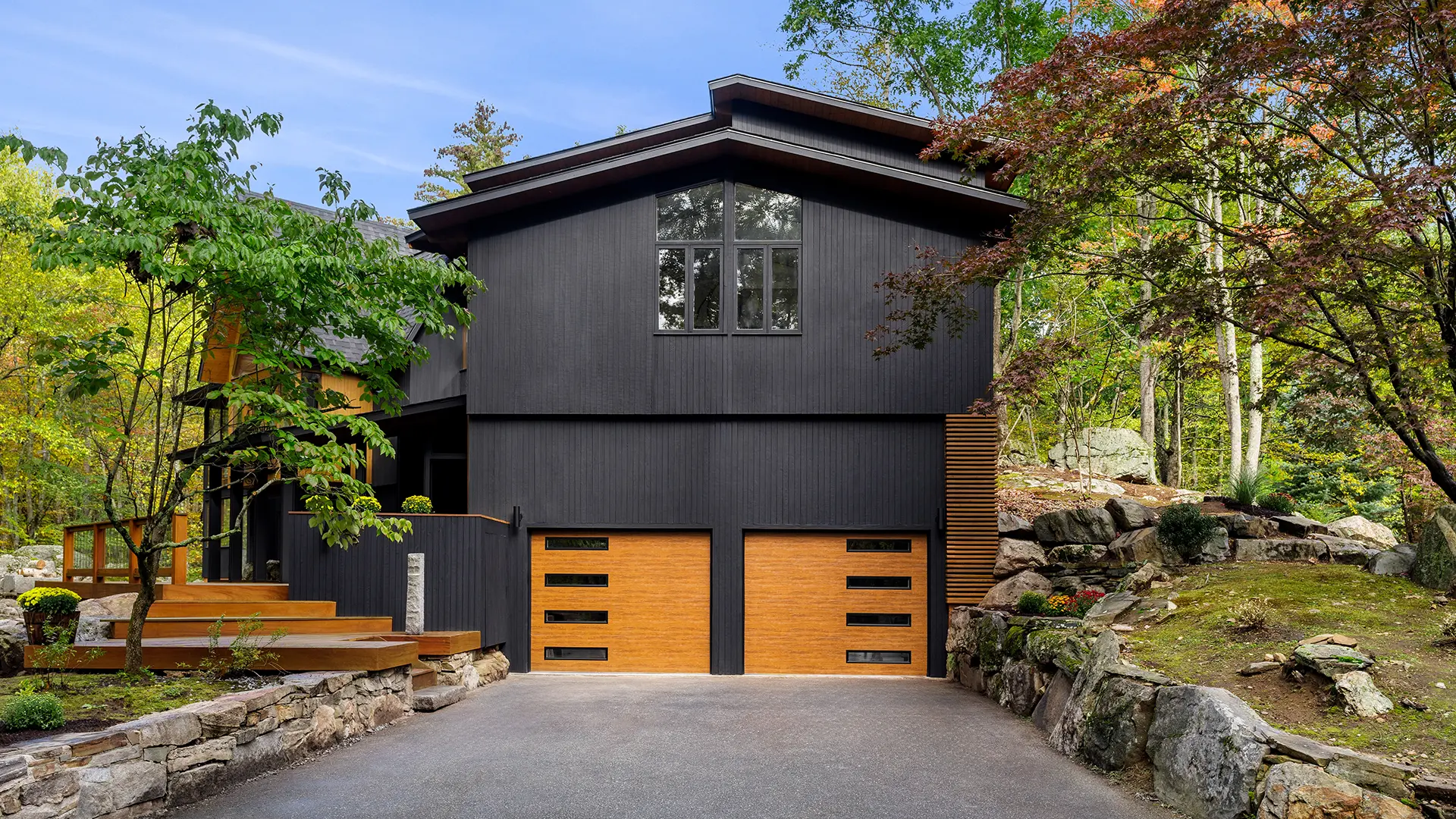When it comes to garage doors, we often focus on appearance, durability, and security features. However, another important element that impacts the operation and longevity of a garage door and how you can use the space is the garage door track configuration.
Selecting the appropriate track configuration depends on several factors, including the size of your garage, ceiling height, intended use, and personal preferences.
The most common track configurations are: standard, high lift, high vertical lift and track that follows the roofline.

Standard Garage Door Track Configuration
The standard track configuration is the most common option for residential garage doors with standard ceiling heights. The door travels up the vertical tracks and overhead. Although it is common, this track design can limit clearance for tall recreational vehicles and restrict ceiling storage. It’s also not the most ideal choice for garages with high ceilings or unusual roof lines.
High Lift Garage Door Track Configuration
High lift track configurations are similar to standard lift but incorporate a higher vertical track before curving horizontally. The high lift track is used when there is ample headroom — over 30 inches — and additional clearance is required. This design raises the door closer to the ceiling when fully open, providing space for tall vehicles like RVs, or to make sure the track avoids obstacles in the garage, such as an entry door or other structural elements.
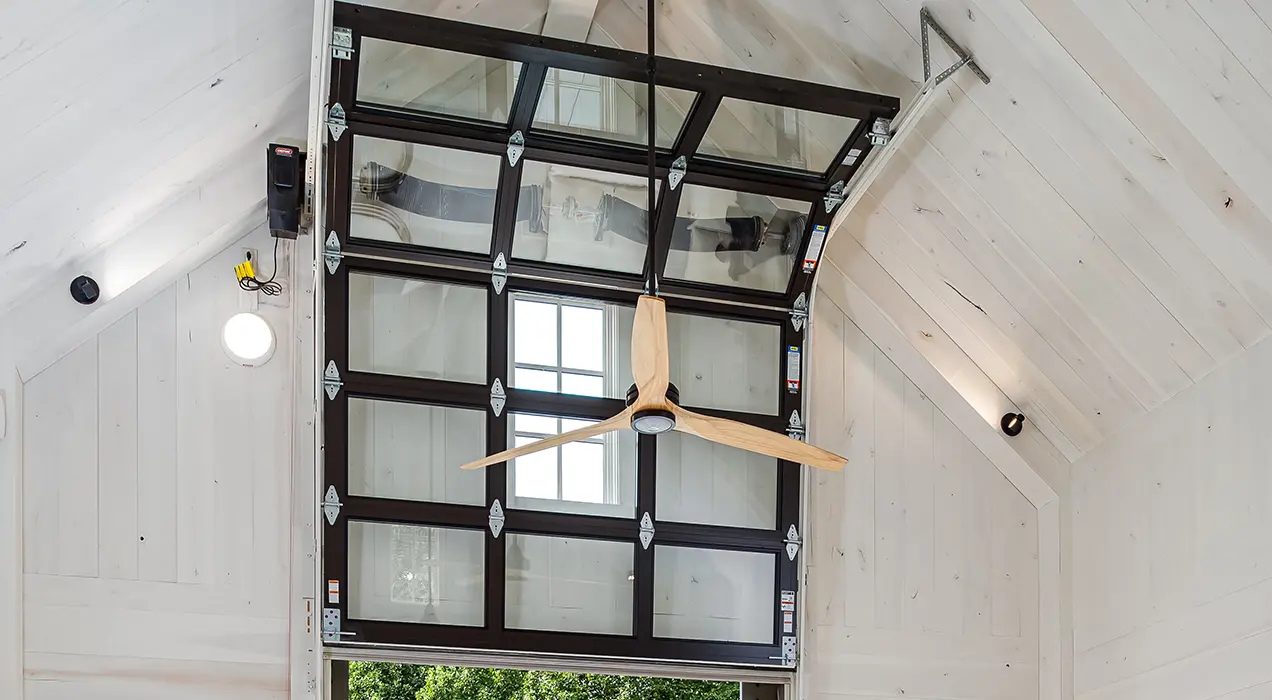
The Avante® garage door on this outdoor party barn use a high lift track so that the rails don’t interfere with the ceiling fans and extended height roof line.
Vertical Lift Garage Door Track Configuration
Vertical lift configurations feature tracks that extend vertically from the floor to the ceiling without curving horizontally to maximize overhead space. It’s a great choice for garages with high ceilings or dual-purpose functionality like an indoor gym or basketball court.

A vertical lift track requires the door height plus 12 inches of headroom clearance. The door travels up the wall without any horizontal tracks protruding into the space.
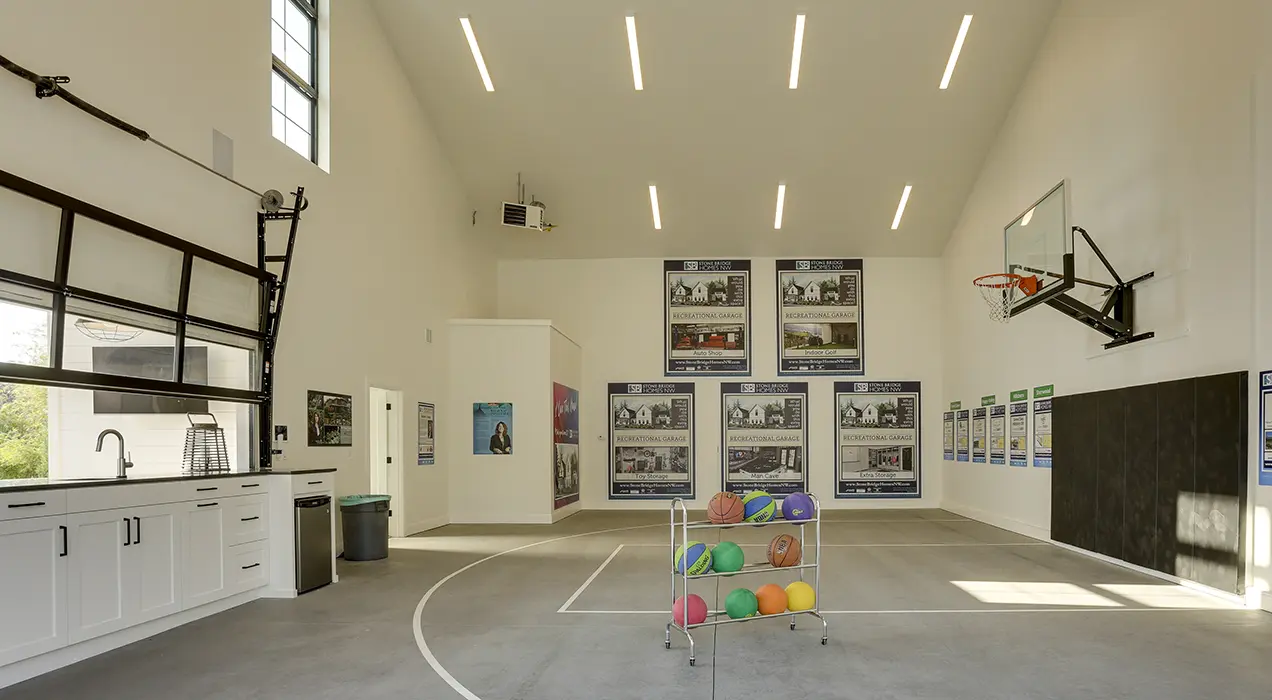
Following the Roof Line Garage Door Track Configuration
For garages with pitched or sloped ceilings, the vertical tracks are installed to follow the angle of the roofline, allowing the door to open without compromising headroom or workspace. And it complements the garage’s architecture for a clean appearance.
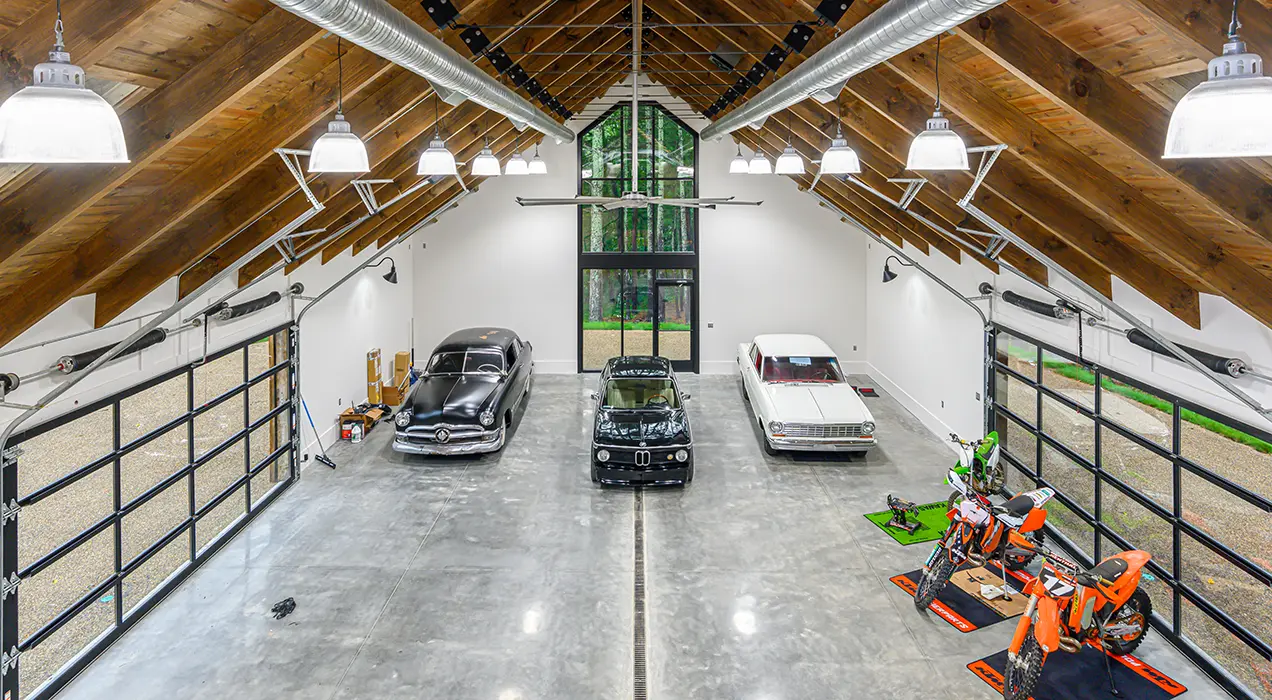
The exposed tracks along the sloped roof enhance the industrial feel of this hobby workshop without compromising overhead space.
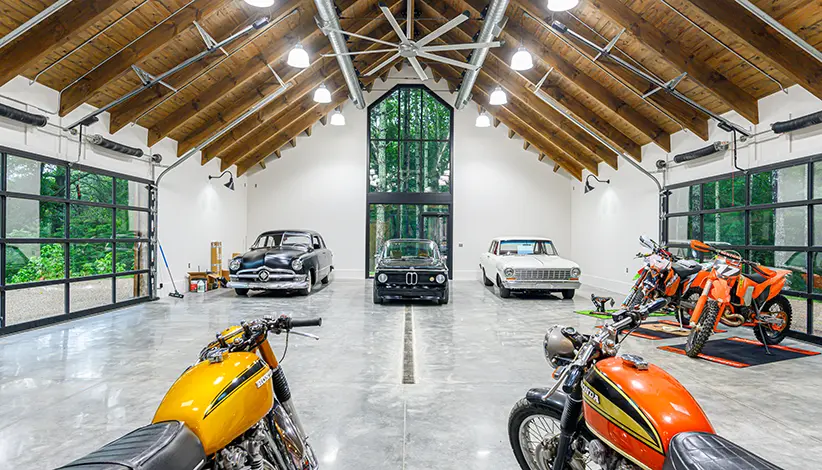
Your garage door track configuration plays an important role in its functionality, operation, and how you can use the garage.
Tracks for any residential garage door can be customized provided there is ample ceiling height for your desired configuration. It will require precise measurements and professional installation to ensure proper alignment and may be more expensive than a standard lift track.
Bottom line: understanding different track configurations helps you make a well-informed decision that enhances both the practicality and aesthetic appeal of your garage. Consult your Clopay dealer to determine the optimal configuration for your specific needs.
Want to learn more about garage doors? Read our comprehensive buying guide to learn more about garage door track configuration, garage door components, average garage door size and more!
Helpful Articles
Garage Door Springs 101: Signs, Safety, and Professional Insights

